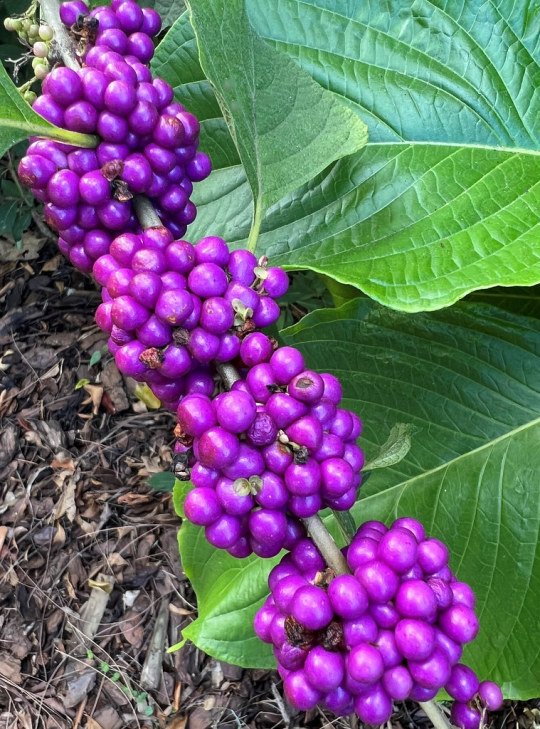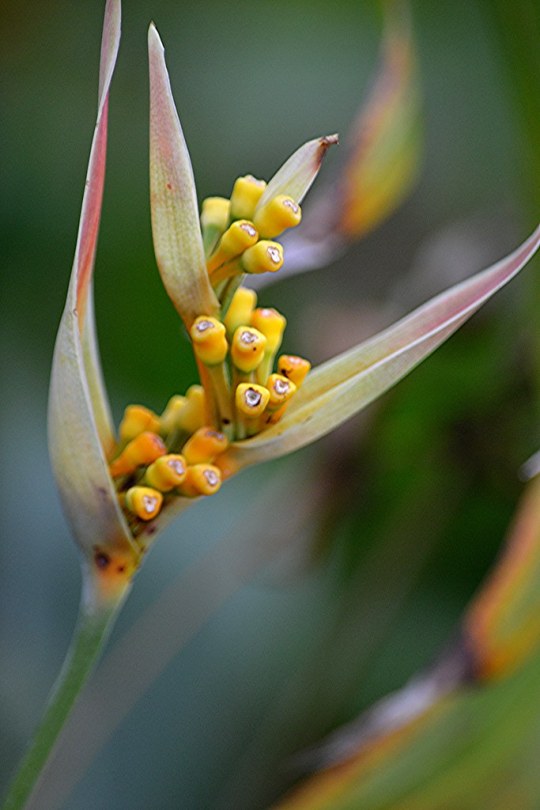#biscayneparkflorida
Explore tagged Tumblr posts
Photo

Coral plant in bloom by jungle mama https://flic.kr/p/2oycCkg
10 notes
·
View notes
Photo

Csdesignerlandscaping.com. That property value is everything. #Cdesigner, #landscapingideas, #Landscaping, #Aventurafl, #Landscaper, #hollywoodfl, #miamishoresfl, #biscayneparkflorida, https://www.instagram.com/p/CLOXoCfpVZo/?igshid=1nh0s8cjvpepb
#cdesigner#landscapingideas#landscaping#aventurafl#landscaper#hollywoodfl#miamishoresfl#biscayneparkflorida
0 notes
Photo

Bright Beautyberry cluster is great for jam by jungle mama https://flic.kr/p/2o7ZXHZ
25 notes
·
View notes
Photo

Barrel cactus lacy spines by jungle mama https://flic.kr/p/2nyJyTX
8 notes
·
View notes
Photo

White Chalice Vine flower with target lines for bees by jungle mama https://flic.kr/p/2mW8P77
7 notes
·
View notes
Photo

Explosive filaments by jungle mama https://flic.kr/p/2mU7GHV
6 notes
·
View notes
Photo

Target lines attract bees to pollen by jungle mama https://flic.kr/p/2n9paRE
2 notes
·
View notes
Photo

Cut grass meets pink water lily by jungle mama https://flic.kr/p/2kYvZ43
7 notes
·
View notes
Photo

Purple flower with nectaring bee inside by jungle mama Asystasia gangetica is a species of plant in the family Acanthaceae. It is commonly known as the Chinese violet, coromandel or creeping foxglove. In South Africa this plant may simply be called asystasia. Biscayne Park FL www.susanfordcollins.com https://flic.kr/p/2mTqze2
0 notes
Photo

Honey bee on Purple Mist by jungle mama Ageratum is a genus of 40 to 60 tropical and warm temperate flowering annuals and perennials from the family Asteraceae, tribe Eupatorieae. Most species are native to Central America and Mexico but four are native to the United States. Biscayne Park FL www.susanfordcollins.com https://flic.kr/p/2kk2QRh
0 notes
Photo

Toothy flower morphs from orange to gold by jungle mama Heliconia, derived from the Greek word helikonios, is a genus of about 100 to 200 species of flowering plants which are native to the tropical Americas and Pacific Ocean islands west to Indonesia. Many species of Heliconia are found in rainforests or tropical wet forests of these regions. Common names for the genus include lobster-claws, wild plantains or false bird-of-paradise because of their close similarity to the bird-of-paradise flowers (Strelitzia). Collectively, these plants are also simply called Heliconias. These plants range from 1 ½ to 15 feet tall depending on species. The simple leaves of these plants range from 6 inches to 10 feet. They are characteristically long, oblong, alternate, or growing opposite one another on non-woody petioles often longer than the leaf, often forming large clumps with age. Their flowers are produced on long, erect or drooping panicles, and consist of brightly colored waxy bracts with small true flowers peeping out. The growth habit of heliconias is similar to Canna, Strelitzia, and bananas, to which they are related. The flowers can be hues of reds, oranges, yellows, and greens. The plants typically flower during the wet season. The bracts protect the flowers; floral shape often limits pollination to a subset of hummingbirds. Heliconias are grown for florists and as landscape plants in tropical regions all over the world. Heliconias need an abundance of water, sunlight, and soils rich in humus. The flower of H. psittacorum (Parrot Heliconia) is especially distinctive, its greenish-yellow flowers with black spots and red bracts are reminiscent of bright parrot plumage. Most commonly grown landscape Heliconia species include Heliconia augusta, H. bihai, H. brasiliensis, H. caribaea, H. latispatha, H. pendula, H. psittacorum, H. rostrata, H. schiediana, and H. wagneriana. Heliconias are an important food source for forest hummingbirds, some of which (for example Rufous-breasted Hermit, Glaucis hirsuta) also use the plant for nesting. The Honduran White Bat, Ectophylla alba also lives in tents it makes from Heliconia leaves. Biscayne Park FL www.susanfordcollins.com https://flic.kr/p/2jrFS9u
0 notes
Photo

Stinkhorn fungus pops up when it rains .... astounding! by jungle mama I headed out to empty my trash and I was repelled by the smell of rotting flesh... or so it seemed until I noticed the strange geometric red forms of Stinkhorn fungi. Although their strong rotting smell is bad, these fungi aren't bad for your landscape and can actually be beneficial. Stinkhorns break down organic matter which is especially helpful in Florida’s naturally sandy, nutrient-poor soils. Stinkhorns break down mulch to make nutrients available for plants. Clathrus ruber is a species of fungus in the stinkhorn family, and the type species of the genus Clathrus. It is commonly known as the latticed stinkhorn, the basket stinkhorn, or the red cage, alluding to the striking fruit bodies that are shaped somewhat like a round or oval hollow sphere with interlaced or latticed branches. The fungus is saprobic, feeding off decaying woody plant material, and is often found alone or in groups in leaf litter on garden soil, grassy places, or on woodchip garden mulches. Although considered primarily a European species, C. ruber has been introduced to other areas, and now has a wide distribution that includes northern and southern Africa, Asia, Australia, and North and South America. The species was illustrated in the scientific literature during the 16th century, but was not officially described until 1729. The fruit body initially appears like a whitish "egg" attached to the ground at the base by cords called rhizomorphs. The egg has a delicate, leathery outer membrane enclosing the compressed lattice that surrounds a layer of olive-green spore-bearing slime called the gleba, which contains high levels of calcium that help protect the fruit body during development. As the egg ruptures and the fruit body expands, the gleba is carried upward on the inner surfaces of the spongy lattice, and the egg membrane remains as a volva around the base of the structure. The fruit body can reach heights of up to 20 cm (7.9 in). The color of the fruit body, which can range from pink to orange to red, results primarily from the carotenoid pigments lycopene and beta-carotene. The gleba has a fetid odor, somewhat like rotting meat, which attracts flies and other insects to help disperse its spores. Although the edibility of the fungus is not known with certainty, its odor would deter most from consuming it. C. ruber was not regarded highly in tales in southern European folklore, which suggested that those who handled the mushroom risked contracting various ailments. Stinkhorns are in the same order of fungi as puffballs and earthstars. They start out as white egg-like structures in mulch or other damp decomposing material. Most of the fungal structure is underground. When enough water is available, the egg-sac structure ruptures and the mature mushroom (the “stinkhorn”) emerges. The smell attracts ants and flies that carry Stinkhorn spores to other places. Depending on the type of stinkhorn, this mushroom is stalk-like, globular, or latticed. Stinkhorns vary in color but are usually red to orange in Florida. www.susanfordcollins.com https://flic.kr/p/2jnr6HC
0 notes
Photo

Schomburkgia Orchid spray by jungle mama An outrageous composition by Mother Nature. Schomburgkia, pronounced schom-BURK-ee-ah is a genus of Orchidaceae, The genus was named in honor of Sir Richard Schomburgk (1811-1891) who explored and collected extensively in Guyana and became Director of the Adelaide Botanic Gardens in Australia. Species in this genus are epiphytic or lithophytic. An epiphyte is an organism that grows on the surface of a plant and receives moisture and nutrients from the air, rain, water (in marine environments) or from debris accumulating around it. A lithophyte is a plant that grows on rock. According to the Royal Horticultural Society, Schom. is the official abbreviation for this genus. Schomburgkia Biscayne Park, FL [email protected] https://flic.kr/p/2jjGyFx
0 notes
Photo

A brush of Palm seeds by jungle mama www.susanfordcollins.com https://flic.kr/p/2iZP3V4
0 notes
Photo

White Magnolia and petals full of rosy discarded pistils by jungle mama The center of a magnolia flower contains a cluster of curly golden pistils surrounded by rose-tipped white stamens. When the stamens ripen, honeybees fly in and pull them down into the petals which become a playground on which, appearing drunk on stamen nectar, they roll, frolic and toss them about. In this picture, the stamens have already been removed, revealing the rosy throat within. The picture above this one in my Photostream shows a bee frolicking amongst the pulled down stamens. Magnolia virginiana, Sweet Bay Magnolia, Swamp Bay, Laurel Bay Biscayne Park, FL www.susanfordcollins.com https://flic.kr/p/2iZe3cd
0 notes
Photo

Bottlebrush is flowering by jungle mama I love sliding in very close to these unusual buds and flowers! They literally pop open and the filaments go in all directions! Callistemon species are commonly referred to as bottlebrushes because of their cylindrical, brush like flowers resembling a traditional bottle brush. They are found in the more temperate regions of Australia, mostly along the east coast and south-west, and typically favor moist conditions so when planted in gardens thrive on regular watering. However, at least some of the species are drought-resistant. Bottlebrush seed capsules Callistemons can be propagated either by cuttings (some species more easily than others), or from the rounded seeds. Flowering is normally in spring and early summer (October–December), but conditions may cause flowering at other times of the year. The obvious parts of the flower masses are stamens, with the pollen at the tip of the filament. Biscayne Park, FL www.susanfordcollins.com https://flic.kr/p/2iXbHHn
1 note
·
View note